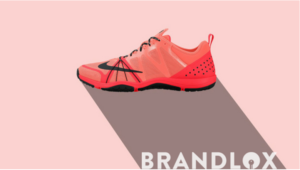
You don’t have to be an e-commerce analyst to figure out what Amazon CEO Jeff Bezos means when he says that he wants to turn his company into “the everything store.” For Bezos, the idea of being able to sell everything really means everything.
Bezos wants Amazon to be the Google of online retail; moreover, his acquisition of Whole Foods plus the Amazon Go convenience store project suggest that Bezos wants to blend the e-commerce world with the brick-and-mortar retail space. In his quest to turn Amazon into “the everything store,” Bezos has run into a couple of roadblocks, and the most significant is that a few major brands do not want to do business with him because of counterfeiting and brand protection issues.
Luxury goods manufacturers often complain about the rampant counterfeiting that takes place on the third-party Amazon Marketplace, and even mainstream brands such as Nike have at some point been reluctant to establish an Amazon presence unless they are able to protect product ASINs.
Eventually, Nike agreed to sell its products on Amazon, but only under certain conditions. To court Nike, Amazon broke from its traditional business model of leaving product listings wide open for others to list and edit; this means that Nike can exert full control and protection over the Amazon Standard Identification Numbers assigned to the items they sell.
Amazon Brand Gating and ASIN Protection
Major brands such as Nike are given special status to operate on the Amazon Marketplace. First of all, these brands primarily list their products on the first-party marketplace, which means that Amazon acts as the primary seller. Second, these brands have special designations under the Brand Registry and Brand Gating programs to protect ASINs.
On the larger third-party Amazon Marketplace, Brand Registry is widely available, but the same cannot be said about Brand Gating. It is vital for the long-term Amazon business model to allow open access to ASINs, but the company is willing to make concessions in limited cases.
In addition to ASIN control through exclusive Brand Gating, Nike also conducts surveillance in the Amazon Marketplace, looking for signs of counterfeiting and intellectual property violations; this strategy results in strong brand and ASIN protection.
How Smaller Brands Can Protect their ASINs

The prominence of Nike and other major brands allows them to negotiate with Amazon and set certain conditions related to ASIN protection. It is up to modest brands and independent sellers who do not qualify for Brand Gating to apply strategies to protect ASINs and their reputations on the Amazon Marketplace.
ASIN protection begins with establishing a trademark and applying for the Amazon Brand Registry program. Sellers can start the process with an application pending at the United States Patent and Trademark Office. Additionally, sellers should make use of an e-commerce monitoring service such as Brandlox, which is available on a subscription basis.
With Brandlox, Amazon sellers simply assign product listings to be monitored around the clock. Whenever an unauthorized seller lists an ASIN without permission, sellers are notified. From this point on, sellers can contact those unauthorized merchants or use advanced Brandlox tools such as cease-and-desist notices that can be generated and tracked in case Amazon Seller Support needs to get involved.
Relentless ASIN hijackers and counterfeiters can be dealt with by means of Brandlox test purchases; in this case, the Amazon legal department can intervene.
Brandlox is ideal for product manufacturers and white label distributors who manage 10 or more unique ASINs on the Amazon Marketplace. If you are interested in learning more about how Brandlox can protect product ASINs, contact our office and start a free trial today.
